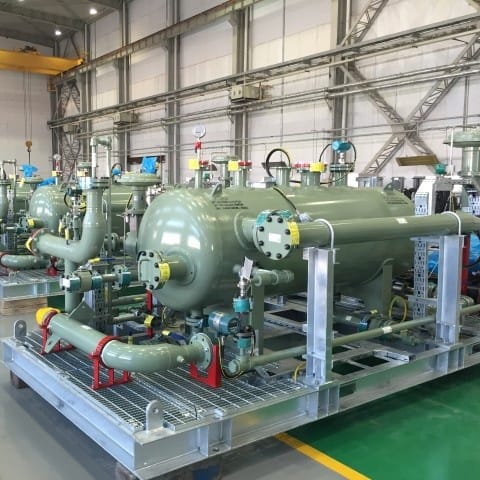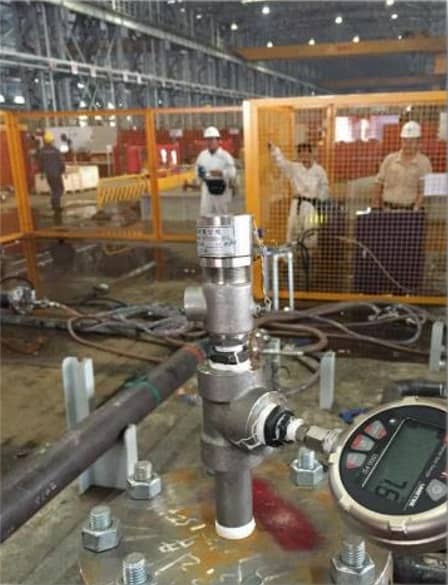Hydro Testing: The Essential Guide
Ensuring Safety and Reliability in Pressure Systems
Introduction to Hydro Testing
In the realm of industrial safety and quality assurance, hydro testing stands as a pivotal process for ensuring the integrity and reliability of pressure systems. This comprehensive guide explores the intricacies of hydro testing, from its fundamental principles to advanced applications and best practices. We delve into the various types of hydro tests, their significance in different industries, and the steps involved in conducting a successful test.
What is Hydro Testing?

Hydro testing, simply put, is a non-destructive testing method that involves subjecting a pressure vessel, pipeline, or any other pressure-containing component to a controlled hydrostatic pressure. This pressure is typically higher than the maximum operating pressure to assess the structural integrity and identify any potential weaknesses or defects. The test is performed using water or another incompressible fluid as the testing medium.
Significance of Hydro Testing
The importance of hydro testing cannot be overstated. It serves as a crucial safety measure, preventing failures that could result in costly downtime, environmental damage, or even personal injuries. By identifying weaknesses before they become hazards, hydro testing ensures the reliability and longevity of pressure systems across various industries, including oil and gas, petrochemical, power generation, and more.
Types of Hydro Tests
There are several types of hydro tests, each serving a specific purpose:
- Proof Pressure Test: Conducted to demonstrate that the system can withstand a specified pressure without failure.
- Leak Test: Verifies the tightness of the system by detecting any leakage at a specified pressure.
- Burst Test: Determines the maximum pressure at which the system fails, providing insights into its safety limits.
- Cycle Test: Simulates operational conditions by cycling the pressure between minimum and maximum values.
Industries that Rely on Hydro Testing
The need for hydro testing spans multiple industries:
- Oil and Gas: Pipelines, storage tanks, and other equipment in the oil and gas industry undergo rigorous hydro testing to ensure their safety and compliance with stringent regulations.
- Power Generation: Steam boilers, turbines, and other pressure-containing components in power plants rely on hydro testing for reliable operation.
- Chemical Processing: Reactors, heat exchangers, and other vessels in chemical plants undergo hydro testing to ensure they can handle the harsh conditions and chemicals involved in the process.
Steps Involved in Hydro Testing
The process of hydro testing typically involves the following steps:
-

Hydro Testing, Hydrostatic Testing Preparation: The system inspected visually for any damage or defects. All necessary safety measures implemented, and the testing equipment is calibrated.
- Filling: The system filled with the testing fluid, typically water. The filling process carefully monitored to avoid excessive pressure build-up.
- Pressurization: The fluid pressurized gradually to the desired test pressure. This done slowly and carefully to avoid sudden stress on the system.
- Inspection: The system inspected for any leaks, deformations, or other signs of failure. Thus, This inspection is typically both visual and instrumental.
- Depressurization and Drainage: As long as the test complete, the pressure gradually released, and the testing fluid is drained safely.
Challenges
While hydro testing is an essential process, it also presents some challenges:
- Safety Concerns: The high pressures involved in the tests can pose safety risks if not handled properly. Strict safety protocols must follow to ensure the safety of personnel and equipment.
- Cost and Time: the tests can be costly and time-consuming, requiring specialized equipment and personnel. However, the long-term benefits in terms of safety and reliability often outweigh these costs.
- Environmental Impact: The use of large volumes of water and potential disposal issues can have an environmental impact. Sustainable practices should be adopted to minimize these impacts.
Advancements
With the advent of new technologies, the tests have evolved to become more efficient and reliable:
- Automated Systems: Automated testing systems have reduced the need for manual intervention, improving accuracy and reducing errors.
- Non-intrusive Inspection: Advanced inspection techniques, such as ultrasonic and radiographic testing, allow for non-intrusive inspection of the system during the test.
- Simulation and Modeling: Computer simulation and modeling techniques can predict the behavior of the system under test conditions, providing insights into potential failure modes.
Conclusion
In conclusion, the tests remain an indispensable process in ensuring the safety and reliability of pressure systems across various industries. With advancements in technology and best practices, the tests become more efficient and effective in identifying and preventing failures. As the demand for safe and reliable pressure systems continues to grow, the role of hydro industry resources.
Learn more Successful Arctic module fabrication, steel structure, modular and skid, steelwork, supplier audit, DNV Class, Oil & Gas, welding supervisor, welding quality inspection, CWI CSWIP welding inspector, pump and pipe, stainless steel fabrication and CNAS ISO 17025 9712 NDT NDE practice via below-
https://www.jsc-safe.com/steel-structures-modules-machining/

